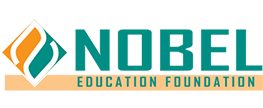
Abroad study is a dream for many Nepali students today. With state-of-art facilities, education system, and methodologies, abroad study is bound to open lots of doors for you. Financing could be one of the most important things you need to achieve your abroad study dreams today. We have a comprehensive guide on financing and bank loans if you are looking for abroad study.
If you are a Nepali student looking to study in Australia or the United States for your undergraduate and postgraduate levels, there are several financing and bank loan options available to you. It’s important to carefully consider your financial situation and explore various options to ensure you make informed decisions. Here are some common financing options:
Australia:
- Scholarships and Grants:
- Explore scholarship opportunities offered by Australian universities, government bodies, and private organizations. Many institutions provide scholarships based on academic merit, leadership skills, and other criteria.
- Part-Time Work:
- International students in Australia are allowed to work part-time during the academic year and full-time during scheduled breaks. Income from part-time work can help cover living expenses.
- Overseas Student Health Cover (OSHC):
- Health insurance is mandatory for international students in Australia. OSHC covers medical expenses and is a part of the overall cost you need to consider.
- Financial Aid and Loans:
- Some Australian banks offer loans specifically tailored for international students. Research and compare interest rates and terms before applying.
United States:
- Scholarships and Grants:
- Explore scholarships provided by universities, private organizations, and government programs. Websites like College Board, Fastweb, and Chegg can help you find relevant scholarships.
- Work Opportunities:
- In the U.S., international students on F-1 visas are typically allowed to work on-campus during the first academic year. Optional Practical Training (OPT) and Curricular Practical Training (CPT) are other employment options available during and after studies.
- Federal Student Aid (FSA):
- Although most federal financial aid programs are limited to U.S. citizens and permanent residents, some universities offer institutional aid or private scholarships that international students can apply for.
- Private Loans:
- Some U.S. banks and financial institutions offer private student loans to international students. However, these loans may require a U.S. citizen or permanent resident as a co-signer.
General Tips:
- Research Institutions:
- Different universities may have different financial aid policies. Research the financial support options available at the specific institutions you are interested in.
- Start Early:
- Begin your search for scholarships and financial aid early in the application process. Deadlines for applications can vary, and some opportunities have early deadlines.
- Compare Loan Terms:
- If you are considering a bank loan, compare interest rates, repayment terms, and other conditions from various banks to find the most favorable option.
- Financial Planning:
- Develop a comprehensive financial plan that includes tuition, living expenses, insurance, and any additional costs. This will help you understand your financial needs and plan accordingly.
Before making any financial decisions, it’s crucial to check the latest information and requirements, as policies and options may change. Additionally, consider seeking advice from the international student office at your prospective university for guidance tailored to your specific situation.
To learn more about the financing options for you, book an appointment with our counselors today!


